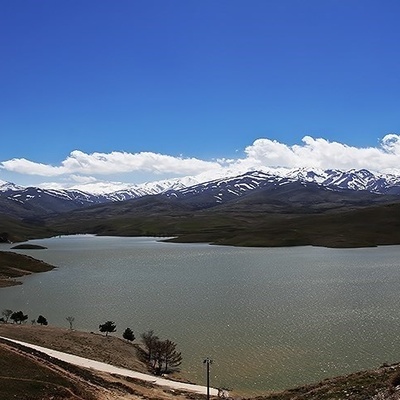Pelās is a type of kilim (flat-woven rug) that is mostly woven among nomadic people. At Saed News, we would like to introduce you to this art. Stay with us.

Introduction to the Art of Woolen Pelās Weaving
Pelās is a type of one-sided woolen kilim that is often used as a floor covering. The most famous Pelās is woven in the Turkmen Sahra region, where it is called Pālas. In Yazd and other parts of Iran, especially among nomadic tribes, this type of floor covering is also woven. Because Pelās is made from wool yarn, it does not transfer moisture from the ground or its surroundings upwards, making it particularly suitable for flooring nomadic tents, often erected on damp, un-drained lands, as well as rural homes.
Pelās Weaving
It is a type of floor covering that, like kilims and carpets, first requires warping the loom. Colorful spun wool fibers are then passed horizontally through the warp threads and beaten down with a comb. In Pelās, the background is often formed by horizontal colorful lines. Pelās is also used as prayer mats and mats placed before the bride. Pelās and embroidered Jājīm look similar, but in Jājīm, the lines are vertical, whereas in Pelās they are horizontal. Pelās is a type of woolen kilim that has long been used as a floor covering to protect against moisture, cold, and ground heat, making it ideal for nomadic tents in Northern Khorasan and rural homes, often set up in damp, poorly-drained lands.

History
Kilim weaving was common in Iran long before the advent of Islam, with its origins estimated between 5000 and 3000 BC. Since textiles decompose quickly unless specially preserved, the true ancient history of weaving among different peoples remains unknown. Bone and wooden weaving tools also do not survive underground, so only stone or metal tools remain as evidence of textile production. However, the few hand-woven artifacts discovered reflect high quality, complex techniques, and the artistic genius of their creators.
The unique culture of kilim weaving was originally a response to the primary needs of rural and migrating people seeking dry tents, carpeted shelters, and warmer sleeping accessories. What we know today as kilim is the result of centuries of hard work on simple rural and nomadic looms. As previously mentioned, the most renowned Pelās (a type of Turkmen kilim) comes from the Turkmen Sahra region.
The Yomut tribe (one of the Turkmen tribes) living in Western Turkestan and Iran is the only group whose people still continue weaving kilims. In northern Afghanistan, a large group of Ersari Turkmens weave kilims and bags. Turkmen bags, in fact, better showcase their weaving artistry than their other textiles.

Traditional bags, tents, and trappings — essential parts of the semi-nomadic Turkmen lifestyle — are flatwoven by various tribes, particularly the Tekke and Salor tribes in Western Afghanistan and Western Turkestan. The Yomut people live in northeastern Iran near the Western Turkestan border and the Caspian Sea, with some families residing in Herat, Western Afghanistan.
Yomut kilims from northeastern Iran and around the Caspian Sea are large, rectangular, and woven in one piece. Their background color varies from dark madder red to soft pink and is decorated with brown floral designs, dark blue, turquoise shapes, and ivory-colored small motifs. Floral patterns are a consistent hallmark of Turkmen textiles, with each major Turkmen tribe weaving flowers in its distinct style.
These differences are evident in the knotted-pile carpets and bags and help identify different tribal groups.
These motifs can be seen on bags slung over camels’ backs and parts of tents. The roots of Turkmen kilims are usually uniform, knotted, or meshed. The kilim borders are wide, plain, red, and sometimes adorned with interesting designs. Extra cords often appear at the ends of these kilims, used during festivals and special ceremonies to anchor the kilims to the ground.

Pelās Production
After shearing, the wool is washed and combed with special combs to remove impurities (thorns and debris) and separate longer fibers from shorter ones. Longer fibers are spun into warp threads and shorter ones into weft threads.
Pelās Weaving
The main pattern in a Turkmen Pelās appears on the back, while in other kilims, the pattern is on the front. Geometric and angular designs are used, making even the slightest weaving error visible. No special knot is used in Pelās; instead, the colored threads (according to the design) are passed over and under the warp threads without going through them. Weft threads are beaten down to tighten the weave, giving Pelās patterns a raised appearance.
Sometimes, goat hair or scraps of fabric are used as materials for weaving Pelās. For this, the Pelās loom is first set up with pegs, the warps are arranged around the loom, and to keep the warps from sticking together, they are fastened with a wooden beam. Then weaving begins using a shuttle and thread. Initially, several rows of plain weaving are done, called “plain weaving,” followed by weaving the Pelās using fabric pieces.

Conclusion
Pelās is still produced in all Turkmen-inhabited areas, including Gonbad, Bandar-e Torkaman, Aq Qala, Kalaleh, Yazd, and other regions, especially among nomadic Iranians, although production has declined in recent years.
Pelās textiles are mainly used as floor coverings, but they are also fashioned into bags, prayer mats, Ayatliq (a traditional accessory), saddlebags, and more.

